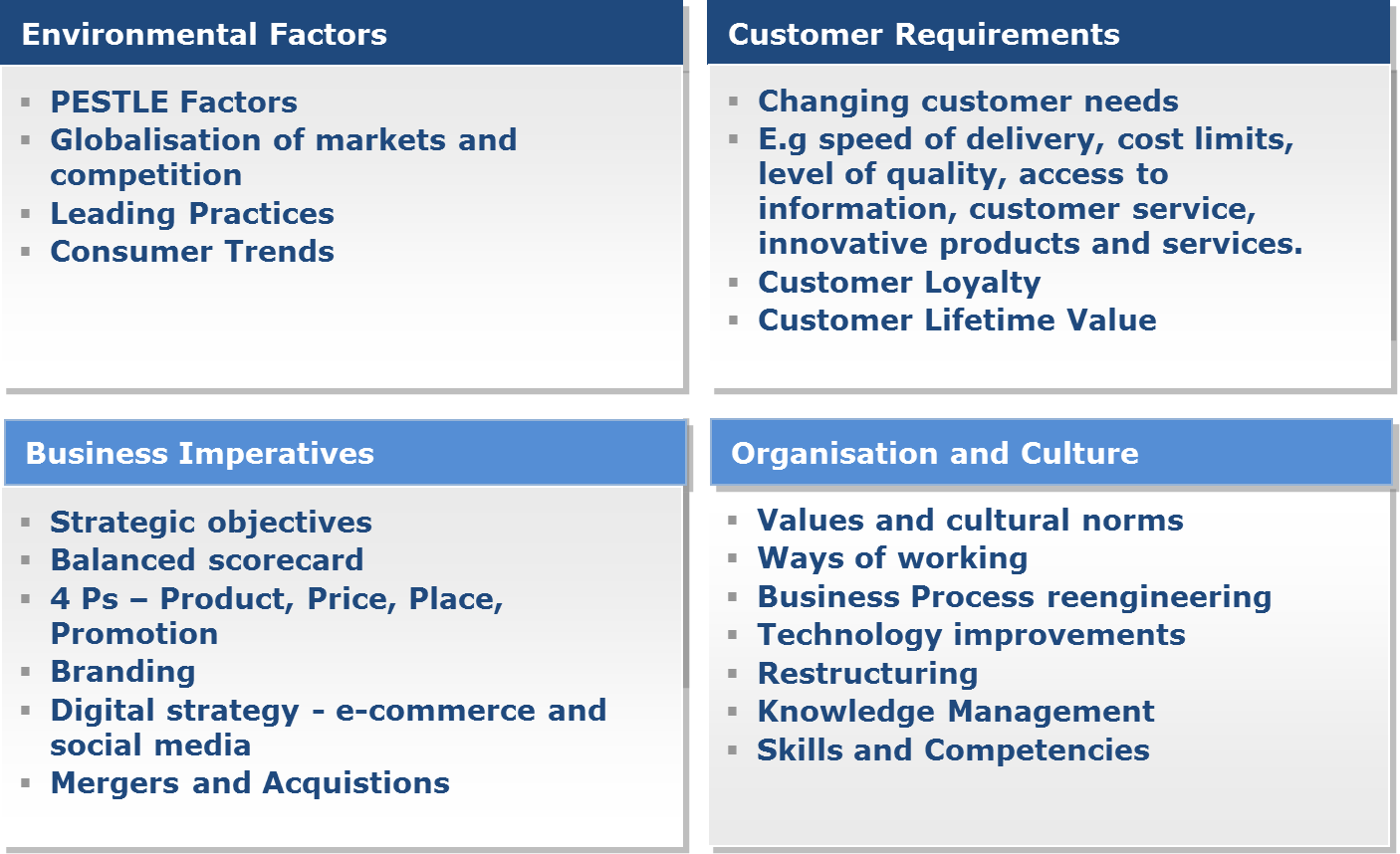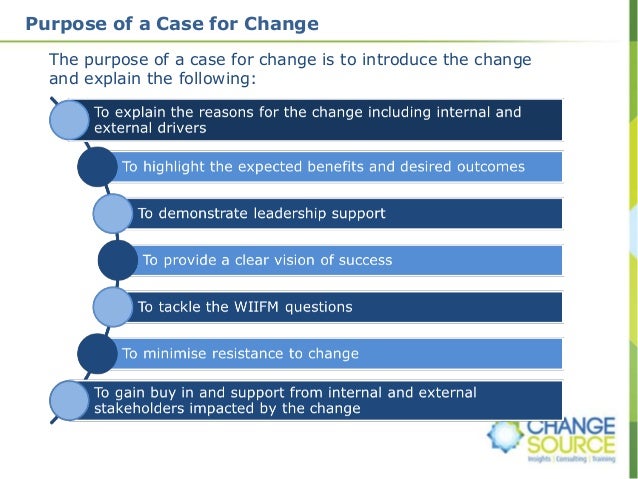Examples Of External Drivers Of Change
Related Articles
Apr 16, 2008 6 Drivers of Change. I thought I’d write a short post providing some immediate reflections from an interesting panel discussion I facilitated today. The panel, titled “Innovation: Change Happens,” featured Dow Corning Chairman, CEO and President Stephanie Burns, Eastman Kodak President and COO Phil Faraci, and Procter & Gamble Chairman.
- 1 What Is the Centerpiece of the Marketing Environment Analysis Framework?
- 2 How Effective Communication Will Help an Organization
- 3 Examples of Transformational Organizations
- 4 Diversity for Groups & Teams in the Workplace
Every organization has its own culture. Almost everything that affects an organization's ability to compete and respond successfully to changes in the external environment – ultimately, the organization's success or failure – is an aspect of that culture. The internal factors determine how the organization moves forward, both as a self-contained organizational entity and in response to its external environment.
Internal Factors: Mission
Why does an organization exist? What is its purpose? Answering these fundamental questions describes an organization's mission. A successful organization has a clear sense of its ultimate purpose and knows how it intends to fulfill that purpose.
Steve Jobs' original mission statement for Apple is a great example that describes in a few words both the company's ultimate goal, 'To make a contribution to the world,' and how it intends to reach that goal, 'by making tools for the mind that advance humankind.'
 You may have decided it’s time to jump on the CRM wagon and utilize your first CRM, or you may be updating a clunky or underpowered one — either way, you’re probably unsure of how to proceed in choosing the right one. Don’t worry: it’s not nearly as daunting as it seems! So you’re looking to get your very own (Customer Relationship Management)?
You may have decided it’s time to jump on the CRM wagon and utilize your first CRM, or you may be updating a clunky or underpowered one — either way, you’re probably unsure of how to proceed in choosing the right one. Don’t worry: it’s not nearly as daunting as it seems! So you’re looking to get your very own (Customer Relationship Management)?
Internal Factors: Leadership
Great leaders inspire and direct. Often the way they do that most persuasively is by example. After 30 years of brutal and isolating imprisonment, Nelson Mandela returned to South Africa to lead the country. It would have been understandable if upon gaining power Mandela had retaliated for the brutality of South Africa's Apartheid regime.
Instead, he advocated communication, understanding and forgiveness. Consequently, South Africa achieved independence with a minimum of violence and retained and utilized the skills of the majority of its citizens.

Internal Factors: Communication
Internal Drivers Of Change
Successful organizations thrive on robust communication practices, where teams and team leaders communicate freely and often to improve results. This two-way communication up and down the hierarchical structure extends from top to bottom. Organizations with communication deficiencies often have rigid leadership structures that destroy trust.
Internal Factors: Organizational Structure
At one time, most organizations had highly hierarchical structures, with many layers of leadership and management defining the organization from top to bottom. More recently, there is a growing understanding that organizations with flat structures – few hierarchical layers from top to bottom – outperform organizations with hierarchical structures. W. L. Gore, a highly successful global materials science company that is focused on discovery and product innovation, has more than 10,000 employees, but only three hierarchical levels: a democratically elected CEO, a few group heads and everyone else.
Internal Factors: Learning
Learning is one of the most fundamental human activities and accounts directly or indirectly for the success of any organization. As technological advances lead to faster rates of change, successful organizations need to find a way to respond that encourages innovation and builds into every employee's experience the opportunity to learn and explore.
Today's most successful organizations, like Google, Apple, Amazon and the cluster of companies led by Elon Musk, are essentially learning organizations. Musk's willingness to explore areas where he's not already an expert has given him a tremendous advantage because what he's learning in one field often has an immediate application in another.
External Factors Affecting an Organization
External factors that affect an organization may be political, economic, social or technological. The same internal factors that lead to an organization's success inevitably characterize that organization's relationship to the external environment in these broad areas.
An organization with a clear sense of mission, for example, can explain itself better to the world and can align itself with the positive elements in each area.
Leaders who can learn and communicate what they've learned within their organizations also can learn from the organization's external environment and communicate successfully with it, resulting in an ongoing exchange of ideas to the benefit of both the organization and its environment.
Amazon, a single company that is transforming the way goods are bought and sold all over the world, has a reputation for communicating effectively with its suppliers and customers. Amazon is a customer-driven idea machine that believes the customer is always right. Determining what is right for each of its millions of customers and creating and maintaining a fast-growing organization that responds effectively to what each customer wants is Amazon's almost unprecedented triumph of 21st-century organization.
External Drivers Of Change
Companies are also impacted by external changes throughout society, like the impact of the #MeToo movement aimed at eliminating sexual harassment. Numerous firms have seen high level executives leave the company after credible charges had been leveled. Companies are also responding to gender equity issues by reviewing salaries of male and female employees to make sure comparable jobs receive comparable pay.
References (5)
About the Author
I am a retired Registered Investment Advisor with 12 years experience as head of an investment management firm. I also have a Ph.D. in English and have written more than 4,000 articles for regional and national publications.
Cite this ArticleExamples Of External Drivers Of Change
Choose Citation Style
